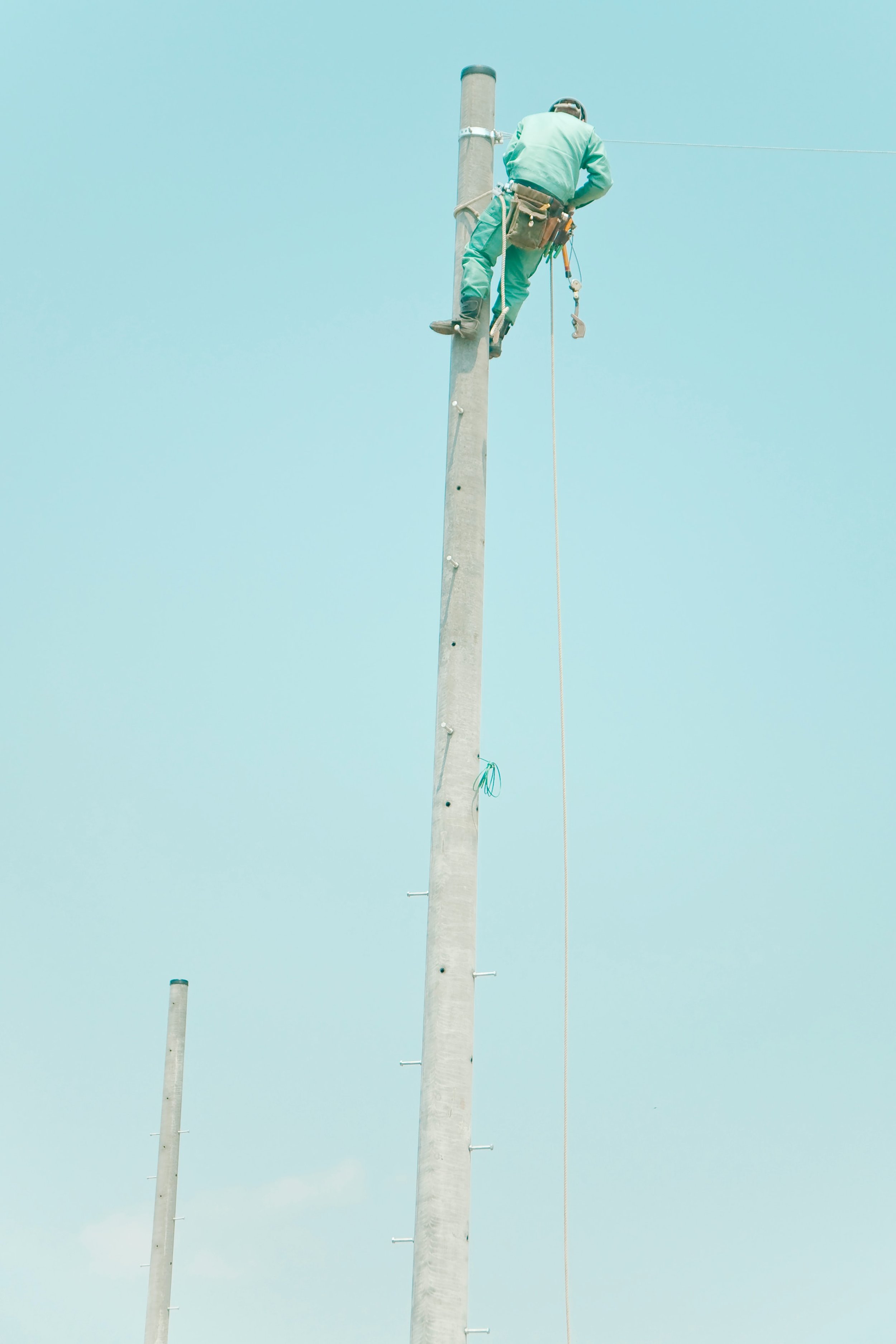I'm Not Afraid of You
I went on a high ropes course once.
It was part of a leadership program.
The idea was to maneuver our bodies through a bunch of scary elements off the ground in order to build camaraderie and trust.
That's one way to get to know 30 people in a group.
A friend of mine had graduated from the same program the year before, and he warned me in advance about the different elements I should expect. One, for example, is known as the Pamper Pole (named after what one should wear in doing it). Essentially, it is a 30-foot free-standing utility pole. The idea is that you climb up and try to stand on top of the pole without having anything to hold on to.
I said to him, “Oh wow. I don’t know if I’ll do that. I’ll have to see.”
But his advice to me?
“Do that one first.”
He pointed out that if I did the scariest one first, everything after that would be easy-peasy.
Wow. What a concept.
I tend to avoid the scariest thing, never tackle it first.
I’m one of those people who walk into the ocean slowly and painfully. I would never just dive in and get wet all at once, especially off the side of a boat where there may be sharks. No, I would rather go ankle-deep, then knee-deep from the edge. And so on from there.
I kind of like the slow, painful, traumatizing way.
The way in from the edge. Where you are in control of how far you want to go.
But the problem with this approach is that it takes tons of time. It gives you too much space to think about what you are doing. To evaluate every last degree of temperature change.
To suffer.
But what would it look like to move toward something that terrifies you?
This reminds me of Oli Nez, a phenomenal saxophone player from Wales who I heard play once. Oli left home at age 18 for London’s Trinity Music Conservatoire, and has played professionally since.
But he chose his instrument at 10 years old.
Why the sax?
Because he used to have severe asthma as a kid—he was in and out of the hospital over many years. So, he started playing the saxophone to try to learn diaphragmatic breathing. And imagine that—he became a world-renowned saxophonist.
So, inspired by Oli, when I got to the ropes course, what did I do?
I actually did the Pamper pole first.
(For real! Peer pressure is a powerful thing.)
And it was terrifying.
The first third of the pole was easy. Stable. I reminded myself that utility workers do this every day. In fact, the pole had the same hand and footholds that they use.
But.
As I climbed to the middle third, the pole started to move under my weight. A subtle sway, but a sway just the same.
I reminded myself: “You’re on belay. If you fall, you won’t hit the ground. They will save you.”
But it was terrifying. Thirty feet is a loooooong way up. And as I got to the final third, the pole was seriously moving back and forth.
I could not go home and tell my friend I chickened out, though. So I kept going. Colleagues standing below were cheering me on. In the end, I made it all the way to the top. And I climbed up to standing.
Holding my breath, of course.
The final challenge at the top was to leap out and grab a trapeze that was hanging there. That was the icing on the cake. The guide was shouting from below not to wait too long—just to go for it. So I did. Because climbing back down was not an option, and the longer I stood there swaying, the worse it got.
I leapt, held the trapeze bar for a few seconds, and my grip slipped. I fell. But they slowly lowered me to the ground.
And I lived.
In reality, that’s what most of the things we are afraid of are like. In the end, we will likely not die. In the end, quite the opposite: If we face our deepest fears, one might even feel a bit triumphant on the other side.
What fear is out there calling to you?
What might you face first, before it stares you down?
They say high ropes courses can build self-confidence and help one focus in chaotic moments. It did that for me.
Next, I’m tackling deep-water snorkeling off the side of a panga. That's later today. Watch out, stingrays and hammerhead sharks. I’m on my way.
